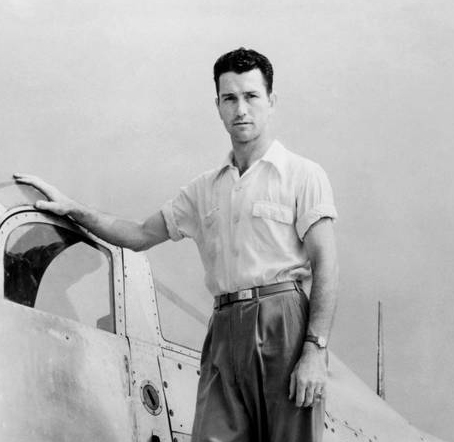
Howard C. Lilly
NASA Pilot
In August 1947, Howard Clifton Lilly became the first permanently assigned NACA engineering test pilot at the National Advisory Committee for Aeronautics’ Muroc Flight Test Unit at what later became Edwards Air Force Base in California. During his assignment at Muroc, he flew both the XS-1 rocket research aircraft and the D-558-I jet-powered research airplane. On 31 March 1948, Lilly became the third pilot to exceed the speed of sound in the XS-1.
Lilly died on 3 May 1948 when the Douglas D-558-I Skystreak he was flying crashed on takeoff. As the airplane climbed, somewhere within the jet engine’s compressor section, a component failed. Sections of the compressor housing and blades cut through the engine casing and the fuselage skin. Some pieces cut the main fuel lines and severed the craft’s control lines as well. Lilly had no control over the plane, which wallowed along for a few seconds before slipping into a left yaw and roll, then diving into the Rogers Dry Lakebed and exploding.
He became the first NACA test pilot to be killed in the line of duty. At the time of his death, he had flown the Skystreak to a higher Mach number than it had previously reached – Mach 0.88 at 36,000 feet on 29 April 1948.
Lilly had trained as a Naval aviator and joined the NACA at Langley Memorial Aeronautical Laboratory in Virginia (later, Langley Research Center) in October 1942. In May 1943 he was assigned to the Lewis Flight Propulsion Laboratory in Cleveland, Ohio (today’s Glenn Research Center), where he flew numerous airplanes in flight research on powerplant systems. He then transferred to Muroc (now NASA’s Armstrong Flight Research Center).
Lilly was 31 at the time of his death. In honor of the NACA test pilot, the road leading to the Armstrong Flight Research Center was named Lilly Avenue. The NACA was a predecessor of the National Aeronautics and Space Administration, which came into existence on 1 October 1958.
























